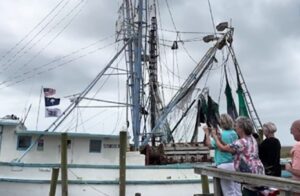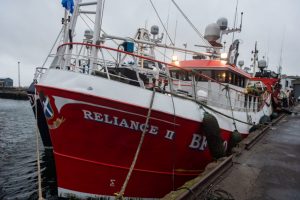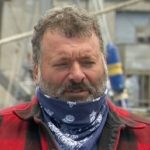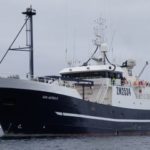Tag Archives: Bay of Fundy
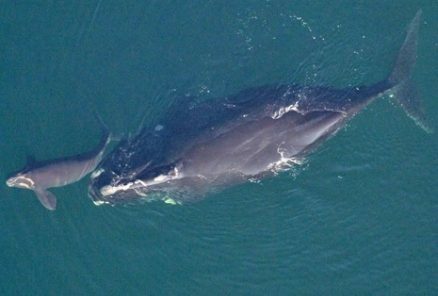
Feds planning 2019 protections for North Atlantic right whales
How the federal government will confirm, modify or adapt protective measures for North Atlantic right whales in 2019 remains to be seen, but officials are sharing the initial findings of 2018’s scientific surveys and studies. After a catastrophic loss of 12 right whales in Canadian waters in 2017, no right whales died here this year, but at a technical briefing Tuesday, officials from Fisheries and Oceans Canada (DFO) and Transport Canada didn’t say whether protections put in place this year were enough — or too much. ,,, Instead they shared key results of a recent peer review of new science by researchers, industry representatives, government officials — as well as scientists from the National Oceanic and Atmospheric Administration in the U.S. — who gathered in Montreal in an effort to reach evidence-based conclusions.>click to read<08:48
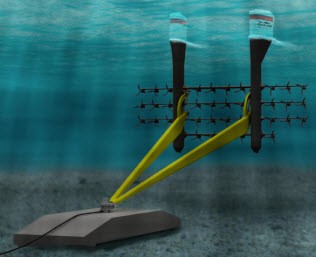
Nova Scotia issues permit for new tidal energy project in Bay of Fundy
The Nova Scotia government is moving ahead with a project that aims to harness the immense power of the Bay of Fundy’s tides, despite the uncertain future of the Cape Sharp Tidal venture. The Department of Energy and Mines has issued a marine renewable energy permit to Black Rock Tidal Power allowing it to test a 280-kilowatt floating platform for up to six months. The floating platform will be installed in Grand Passage, between Long Island and Brier Island in Digby County. The permit will allow the Halifax-based company to learn how its device operates in a marine environment and “take a staged approach to deployment.” It comes as an Irish technical team works to determine why the rotor on the Cape Sharp Tidal turbine in the Bay of Fundy is not turning. >click to read<16:21
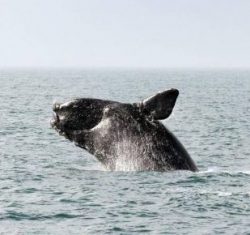
Whale-watchers ask why herring fishery carries on where right whales sighted
A whale-watching tour operator and one of her customers say they are concerned nothing was done to stop herring seiners after two North Atlantic right whales were spotted in the Bay of Fundy off Brier Island, N.S. ,,”My big concern is the herring fishery,” Blackman said. “The seiners have been moving in every night. The last three nights they have been right in the place we spotted the whale this afternoon. Right in the opening between Brier Island and Long Island. “We’re watching the herring seiners come in, and they set up with these huge nets which are endangering the whale.” >click to read<09:51
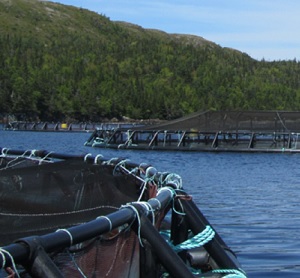
New Brunswick officials suspected pesticide use near lobster pens
An email exchange between employees of Northern Harvest Sea Farms and New Brunswick environment officials reveals the tensions at play last summer and fall during sea lice outbreaks in the Bay of Fundy. The documents — obtained by CBC News through a right-to-information request — surround attempts by the salmon aquaculture company to apply pesticides to its salmon cages in Campobello Island’s Head Harbour. Pesticides can be fatal to lobster, and the salmon farm is near lobster-holding facilities maintained by local fishermen. >click to read<10:19

Ownerless Bay of Fundy turbine operating without fish kill monitoring gear
Even before Cape Sharp Tidal, owned by Irish company OpenHydro and Emera, placed it on the floor of the Minas Passage two weeks ago and OpenHydro was placed in receivership days later, the 10-billion tonnes of seawater hauled into the narrowing between Cape Split and Cape Chignecto was already tainted by bad blood. “The opposition isn’t about just whether it kills fish because other things kill fish too — fishermen kill fish,” said Mary McPhee, former facilities operator for the Fundy Ocean Research Centre for Energy, the government-funded tidal test site commonly known as FORCE. “What fishermen want is for the tidal power people to be treated in the same manner as they are. They want the law to be applied equally. So if a fishery has a quota, why can’t tidal power have a quota?” >click to read<08:47
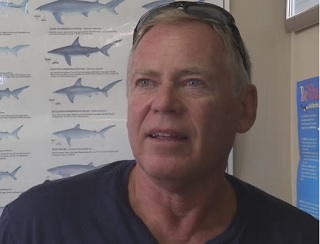
Sharks are killed a ‘stone’s throw’ from protected waters off East Coast, Canadian researchers to question U.S. rules
Canadian scientists on the Bay of Fundy are seething over a spate of recent photos of sharks killed in the bay by U.S. fishermen. Especially upsetting have been social media posts showing a large porbeagle shark that was landed in Eastport, Maine. Porbeagles are protected on the Canadian side of the border, but not in the U.S., which does not consider the species in any danger of extinction. “The shark is protected for one minute, then in a heartbeat it’s no longer protected,” said Steven Turnbull, a marine biologist specializing in shark research at the University of New Brunswick in Saint John. >click to read<20:01
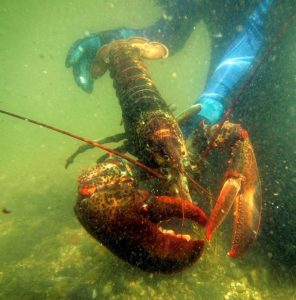
The lobster wars are over. We won
You may recall a few weeks ago when we discussed the coming Lobster Wars involving the United States, Canada and China. (There’s an odd combination for you.) The first component of the conflict has to do with the ongoing dispute between America and the Great White North over who actually owns the “gray area” surrounding the Bay of Fundy off the coast of Maine.,,, It’s the trade war aspect which was of more current interest because it would cut off some of the markets for American fishermen leading to an increase of supply domestically and a cut in demand. >click to read<15:41
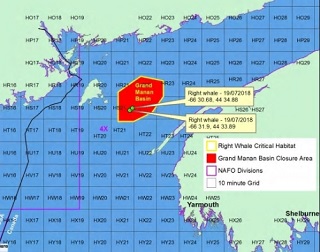
Bay of Fundy: Right whales trigger fishing area closure, gear must be removed from Grand Manan Basin by 6 p.m. Sunday
The Department of Fisheries and Oceans has announced more fishing closures in the Atlantic region due to the presence of right whales. DFO said two right whales were spotted in the Grand Manan Basin — critical habitat area in the Bay of Fundy. The area will be closed to fishing beginning Sunday at 6 p.m. until further notice. All gear must be removed from the closed area before that time. The fisheries affected include groundfish species, herring, mackerel and lobster, DFO said. >click to read<15:05
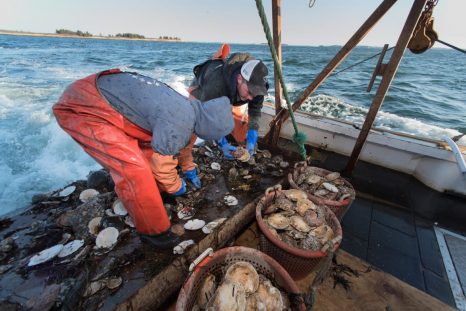
Forget Lobster: The Scallop Is the Real Seafood King
When I tell people that I’m a part-time resident of Maine, I often get an enthusiastic, “Wow, you must get sick of lobster.” And, yes, it’s true. I do get sick of lobster. But not from eating too much. I get sick of lobster cultists, that roving band of hard-shelled Hare Krishnas who loudly express devotion to the crustacean as they wander the Maine coast in search of shrines they call “pounds.”,,, The central tragedy of their endless rovings is the long and pernicious shadow they cast over the region’s true and absolute delicacy. I am talking, of course, about big, flavorful sea scallops, which are the north’s bona fide maritime royalty.,,, Fundy scallops are massive; some are the size of filet mignons. Often, two or three scallops per person are enough for dinner. >click to read<12:56
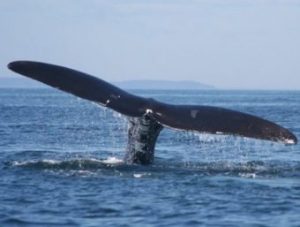
Bay of Fundy fishery has whale of a problem
I’ve worked for the Grand Manan Fishermen’s Association for 25 years. It’s been a good career; there’s always something new in the fishery. I’ve gotten to know some great people both locally and across the country. I come from a fishing family: my father, brother and brother-in-law are all fishermen. I have a strong attachment to what I do and why I do it.,, The right whales ventured north to the Gulf of St. Lawrence. Things were bad last summer. Twelve whales were found dead. Two were entangled in fishing gear. The rest: blunt force trauma or unknown causes, though none of those had fishing gear on them. Government swung into reactionary precautionary mode. We watched amazed and horrified from the other side of the Maritimes while fishery after fishery closed.
Then last week it was our turn. by Bonnie Morse >click to read<21:25
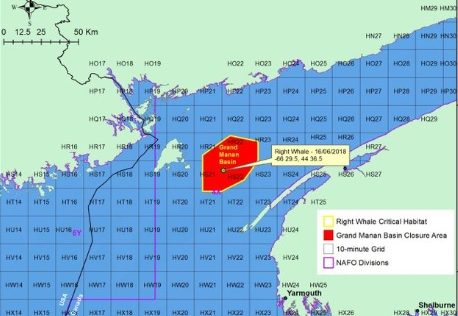
DFO orders fisheries closure in Bay of Fundy after right whale sighting
The federal government announced Monday evening the first temporary fisheries closure in the Bay of Fundy as a result of a North Atlantic right whale sighting. The area, just east of Grand Manan, will be closed to fixed-gear fishing activities starting at 11:59 p.m. Thursday, the Department of Fisheries and Oceans said in a statement. It said the closure, which affects lobster, crab, groundfish, herring and mackerel licenses, will remain in place until further notice. It’s believed to be the first closure of its kind ever in the bay, according to Laurence Cook, chairman of the Grand Manan Fishermen’s Association lobster advisory board. Cook was busy fielding calls and texts from “angry and upset” members after government informed the association around 6 p.m. Monday, he said. >click to read<11:42
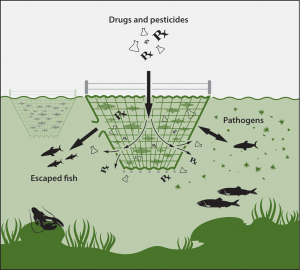
Pesticides Contaminate Fish Farms, Lawsuit in Canada moves forward
Northern Harvest Sea Farms, an ocean-based fish farm in New Brunswick, Canada, was scheduled to appear in court yesterday to answer legal charges stemming from the off-label use of an unnamed pesticide added to its operations to combat severe sea lice outbreaks. The company holds nine licenses for farmed Atlantic salmon cages on the Bay of Fundy, as well as for fish farms off the Newfoundland coast. Sea lice outbreaks are a common at over-crowded, ocean-based fish farms because such facilities afford the optimum conditions for rapidly reproducing and spreading lice. In response, some companies have turned to using illegal and off-label pesticide applications to stave off the problem, which causes huge farmed salmon kills.>click to read< 09:37

Impressive pearl found in Bay of Fundy scallop
When Karen McCavour started fishing for scallops with her husband four years ago, she had no idea the mollusks could produce pearls. But over those years she has developed a growing collection, and a nearly perfect pearl discovered just last week is now one of her most prized pieces. The scallop fishery opened on the Bay of Fundy early last Monday morning. Scallops have to be shucked while on board, and that’s what crew member Andrew Fowler was doing when he came across the large, round pearl. >click here to read< 10:39
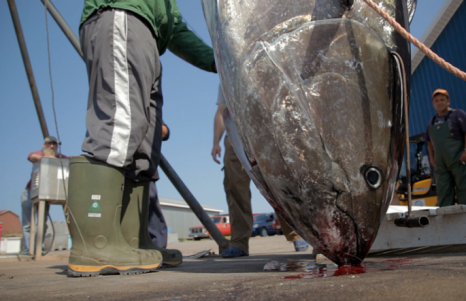
Bluefin tuna in P.E.I. are so hungry they no longer fear humans
Bobbing up and down on cold Atlantic waters, several fishermen toss scaly, silver mackerel overboard. It’s a delicious snack for a bluefin tuna — the largest species of tuna in the world, measuring more than six feet in length and weighing up to 1,600 pounds. The newcomer among them, a writer and ecologist, expects to spend the afternoon patiently waiting for a bite. Instead, the bluefin tuna here in North Lake, P.E.I. are so abundant and so hungry that within minutes their trademark yellow caudal finlets are circling the boat. click here to read the story 18:29
Lobster prices climbing as export market grows
 While consumers may not like the high cost of lobster, it is good news for lobster fishermen like Clinton Pendleton. He fishes with his father and grandfather from Deer Island, N.B., in the Bay of Fundy. Pendleton said recent cold temperatures are driving down landings because lobsters don’t feed when it’s too cold. That means they don’t crawl into the baited traps. “This year, compared to recent years, I don’t remember anytime in June when you were able to see your breath all day long,” he said. Cold weather and high demand have driven the price up and kept it there this season. click here to read the story 21:25
While consumers may not like the high cost of lobster, it is good news for lobster fishermen like Clinton Pendleton. He fishes with his father and grandfather from Deer Island, N.B., in the Bay of Fundy. Pendleton said recent cold temperatures are driving down landings because lobsters don’t feed when it’s too cold. That means they don’t crawl into the baited traps. “This year, compared to recent years, I don’t remember anytime in June when you were able to see your breath all day long,” he said. Cold weather and high demand have driven the price up and kept it there this season. click here to read the story 21:25
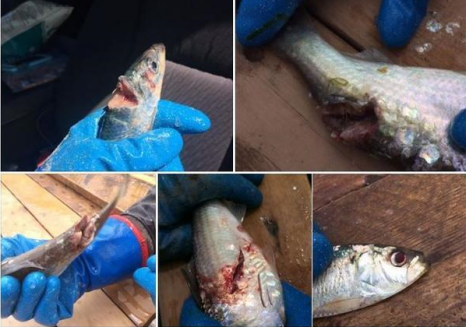
Op-Ed: Something fishy is going on in the Bay of Fundy
If you thought the massive fish and marine animal die-off that took place in Nova Scotia back in December is all cleared up, you’re dead wrong. There have been two more die-offs, but these latest ones are different because they are being caused by man. Besides the massive kill that took place in December that encompassed an area from Annapolis to Yarmouth, there was the mutilated fish brought up in gill nets earlier this month in the Minas Basin area. Now everyone is looking at Nova Scotia Power (NSP) as being the culprit in these latest fish kills. click here to read the story 20:02
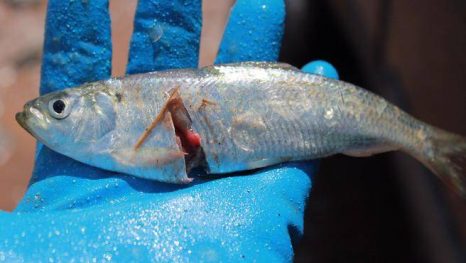
Cape Sharp Turbine blamed for fish gouges in the Minas Basin
Fishermen have been finding sliced up or gouged gaspereaux and herring in their nets and fear the run of mackerel swimming up the bay is next. “I’m just starting to get some mackerel now,” Parrsboro fisherman Gerry Taylor said in an interview, adding there is also concern around the June herring run. “Then (Cape Sharp) will show up again and mess that up, too.” Cape Sharp, a company testing tidal power possibilities in the Bay of Fundy, has deployed several tugs and vessels in the Minas Basin to assist in the recovery of their turbine since mid-April, much to the frustration of fishermen who say the activity is disruptive to their season and their catches.,, Meanwhile, the turbine’s blades are still turning with the force of the tides, even though it has no power flowing to it. Fishermen are finding evidence of what they feared with the catches they’re getting in their nets: what’s being described as an unprecedented number of damaged fish —currently gaspereaux and herring — in the Minas Basin. Click here to read the story 11:21
Proposal to move Bay of Fundy tidal turbine raises fishermen’s concerns
 A fishermen’s group in the Bay of Fundy is worried about Cape Sharp Tidal Venture’s plan to temporarily move its tidal turbine from a designated testing area to a site where an environmental assessment has not been carried out. The Bay of Fundy Inshore Fishermen’s Association said the move endangers fish and violates the rules governing the development of tidal energy in the area. The Cape Sharp Tidal Venture turbine is a joint project between Emera Inc. and OpenHydro. The turbine is currently in the Minas Passage near Parrsboro, N.S. Cape Sharp Tidal confirms that work is currently underway to remove the turbine. It wants to bring it to another area in the Bay of Fundy to do operational tests that would run about five days. “They have no approval to conduct that testing and more importantly is there will be no environmental-monitoring equipment at the site,” said Colin Sproul, spokesperson for the Bay of Fundy Inshore Fishermen’s Association. click here to read the story 20:15
A fishermen’s group in the Bay of Fundy is worried about Cape Sharp Tidal Venture’s plan to temporarily move its tidal turbine from a designated testing area to a site where an environmental assessment has not been carried out. The Bay of Fundy Inshore Fishermen’s Association said the move endangers fish and violates the rules governing the development of tidal energy in the area. The Cape Sharp Tidal Venture turbine is a joint project between Emera Inc. and OpenHydro. The turbine is currently in the Minas Passage near Parrsboro, N.S. Cape Sharp Tidal confirms that work is currently underway to remove the turbine. It wants to bring it to another area in the Bay of Fundy to do operational tests that would run about five days. “They have no approval to conduct that testing and more importantly is there will be no environmental-monitoring equipment at the site,” said Colin Sproul, spokesperson for the Bay of Fundy Inshore Fishermen’s Association. click here to read the story 20:15
Researchers seek fishing ground closures off N.S., N.B., to protect right whales
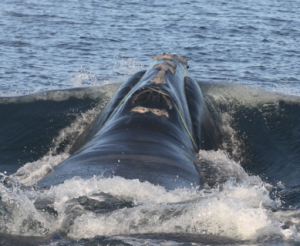 Canadian researchers say they have a solution to a new U.S. government requirement that its seafood imports be caught in a way that minimizes harm to marine mammals. Sean Brillant, the report’s lead author, has recommended the summertime closure of Roseway Basin off southwestern Nova Scotia and areas around Grand Manan in the Bay of Fundy. Those are two areas where North Atlantic right whales usually congregate in summer. Closing them, the paper claims, would reduce the risk of gear entanglements by more than 30 per cent at a cost of 140 tonnes in lost seafood catches. click here to read the story 09:22
Canadian researchers say they have a solution to a new U.S. government requirement that its seafood imports be caught in a way that minimizes harm to marine mammals. Sean Brillant, the report’s lead author, has recommended the summertime closure of Roseway Basin off southwestern Nova Scotia and areas around Grand Manan in the Bay of Fundy. Those are two areas where North Atlantic right whales usually congregate in summer. Closing them, the paper claims, would reduce the risk of gear entanglements by more than 30 per cent at a cost of 140 tonnes in lost seafood catches. click here to read the story 09:22
Fundy fishermen lose bid to stop tidal turbine in Minas Basin
 A group of Bay of Fundy fishermen have lost a bid to overturn the approval of a project in Nova Scotia’s Minas Basin. In February, the Bay of Fundy Inshore Fishermen’s Association argued in Nova Scotia Supreme Court that the province’s environment minister granted approval of the project without enough environmental data. The group, which represents 175 fishermen from Yarmouth to the New Brunswick border, says it believes the tidal energy program will harm marine life. The first turbine was deployed in November. In particular, the group has accused the operators of the turbine of failing to produce “relevant baseline data,” or a snapshot of the environmental state of the Bay of Fundy before the turbine was deployed. On Monday, Justice Heather Robertson rejected the claims by the fishermen, saying “extraordinary efforts have been made to evaluate risk” in the 2009 environmental assessment of the turbine project. click here to read the story 15:37
A group of Bay of Fundy fishermen have lost a bid to overturn the approval of a project in Nova Scotia’s Minas Basin. In February, the Bay of Fundy Inshore Fishermen’s Association argued in Nova Scotia Supreme Court that the province’s environment minister granted approval of the project without enough environmental data. The group, which represents 175 fishermen from Yarmouth to the New Brunswick border, says it believes the tidal energy program will harm marine life. The first turbine was deployed in November. In particular, the group has accused the operators of the turbine of failing to produce “relevant baseline data,” or a snapshot of the environmental state of the Bay of Fundy before the turbine was deployed. On Monday, Justice Heather Robertson rejected the claims by the fishermen, saying “extraordinary efforts have been made to evaluate risk” in the 2009 environmental assessment of the turbine project. click here to read the story 15:37
Bay of Fundy Fishermen trying to overturn approval of tidal turbine
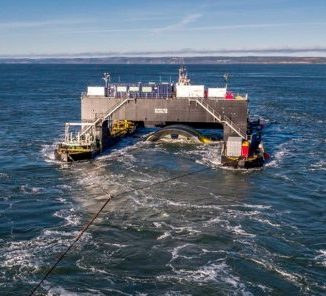 A fishermen’s group has asked the Nova Scotia Supreme Court to set aside provincial approval of a massive tidal turbine in the Bay of Fundy, saying the decision was based on poor scientific data. The 1,000-tonne underwater generator was installed on the floor of the Minas Passage in November, but the Bay of Fundy Inshore Fishermen’s Association has said the test project should be put on hold to ensure the bay’s productive ecosystem is not harmed. David Coles, the lawyer representing the 175-member association, told the court Wednesday that Environment Minister Margaret Miller overstepped her authority last June because the company behind the project — Cape Sharp Tidal — did not submit enough scientific data about the state of the bay prior to installation. “The minister was required to consider certain things, and they’re just not in the record,” Coles told Justice Heather Robertson. Read the story here 14:07
A fishermen’s group has asked the Nova Scotia Supreme Court to set aside provincial approval of a massive tidal turbine in the Bay of Fundy, saying the decision was based on poor scientific data. The 1,000-tonne underwater generator was installed on the floor of the Minas Passage in November, but the Bay of Fundy Inshore Fishermen’s Association has said the test project should be put on hold to ensure the bay’s productive ecosystem is not harmed. David Coles, the lawyer representing the 175-member association, told the court Wednesday that Environment Minister Margaret Miller overstepped her authority last June because the company behind the project — Cape Sharp Tidal — did not submit enough scientific data about the state of the bay prior to installation. “The minister was required to consider certain things, and they’re just not in the record,” Coles told Justice Heather Robertson. Read the story here 14:07
Haddock Boom! The number of haddock believed to have survived their first year off N.S. is “extraordinary,” says biologist
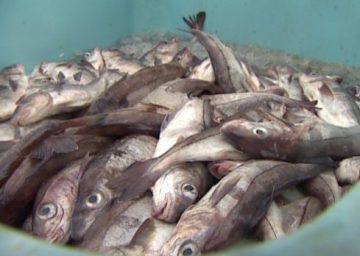 Exactly how many of the haddock that hatched in 2013 are still swimming off the coast of southern Nova Scotia is not certain, but researchers agree the numbers are potentially massive. Biologist Monica Finley recently completed a population assessment for the southern Scotian Shelf and Bay of Fundy. She estimates 264 million haddock were hatched there in 2013 and survived their first year, making it an “extraordinary” year-class. “This 2013 year-class is five times higher than the next highest on record since 1985,” said Finley, who works at a Department of Fisheries and Oceans research facility in St. Andrews, N.B. Her report predicts 100,000 metric tonnes of haddock will reach adulthood in 2017 and 2018. On Georges Bank, the population is predicted to be even bigger, with Canadian and American scientists estimating the 2013 hatch at 1.3 billion fish. Read the story here 18:36
Exactly how many of the haddock that hatched in 2013 are still swimming off the coast of southern Nova Scotia is not certain, but researchers agree the numbers are potentially massive. Biologist Monica Finley recently completed a population assessment for the southern Scotian Shelf and Bay of Fundy. She estimates 264 million haddock were hatched there in 2013 and survived their first year, making it an “extraordinary” year-class. “This 2013 year-class is five times higher than the next highest on record since 1985,” said Finley, who works at a Department of Fisheries and Oceans research facility in St. Andrews, N.B. Her report predicts 100,000 metric tonnes of haddock will reach adulthood in 2017 and 2018. On Georges Bank, the population is predicted to be even bigger, with Canadian and American scientists estimating the 2013 hatch at 1.3 billion fish. Read the story here 18:36
Warming trend continues in waters off Atlantic Canada
 Warmer ocean temperatures off Atlantic Canada continued in 2016, maintaining a trend that started earlier this decade, according to survey results from Canada’s Department of Fisheries and Oceans. On the Scotian Shelf off Nova Scotia, temperatures last year were as high as three degrees above the 30-year average used to establish climatic norms. “It’s not quite the same [record] level of 2012, but it’s getting close to it,” said Dave Hebert, a research scientist with DFO. He added that 2016 was probably the second warmest year on record. Scientists have struggled to explain what is causing the most intriguing aspect of the recent trend: the warming of ocean bottom water, which is not influenced by surface weather events. Hebert said the latest theory is based on model results that see the Gulf Stream moving northward and intersecting with the tail of the Grand Banks. “That is stopping the cold Labrador Sea water from coming around the tail of the Grand Banks,” he said. “That’s where we normally get the cold water that refreshes the [Scotian] Shelf. That hasn’t been happening. Read the story here 16:48
Warmer ocean temperatures off Atlantic Canada continued in 2016, maintaining a trend that started earlier this decade, according to survey results from Canada’s Department of Fisheries and Oceans. On the Scotian Shelf off Nova Scotia, temperatures last year were as high as three degrees above the 30-year average used to establish climatic norms. “It’s not quite the same [record] level of 2012, but it’s getting close to it,” said Dave Hebert, a research scientist with DFO. He added that 2016 was probably the second warmest year on record. Scientists have struggled to explain what is causing the most intriguing aspect of the recent trend: the warming of ocean bottom water, which is not influenced by surface weather events. Hebert said the latest theory is based on model results that see the Gulf Stream moving northward and intersecting with the tail of the Grand Banks. “That is stopping the cold Labrador Sea water from coming around the tail of the Grand Banks,” he said. “That’s where we normally get the cold water that refreshes the [Scotian] Shelf. That hasn’t been happening. Read the story here 16:48
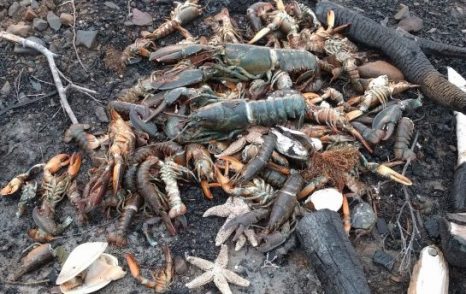
DFO says nothing out of the ordinary with the environment where sea creatures washed up dead
The distressing amount of sea life and diversity of species found dead on some beaches along the Bay of Fundy over the past few weeks has been puzzling. So far, tests haven’t revealed what’s killing the sea life. Federal scientists went out on the water Thursday to examine the physical environment, taking water samples, testing dissolved oxygen, salinity and temperature — all of which were normal. They also scanned images of the bottom of St. Marys Bay off the Bay of Fundy. The video showed normal conditions with no masses of dead organisms that one would expect if the cause was an ongoing environmental problem. “We have ruled out the usual suspects,” said Kent Smedbol, manager of population ecology for DFO. Read the story here 15:31

Protesters hope to change course of tidal project
Energy Minister Michel Samson, Emera representatives and members of FORCE weren’t the only ones to go to Parrsboro on Tuesday to witness flicking the switch to turn on an in-stream tidal power turbine. A group of 20 people, including fisherman, Mi’kmaw, scientists and community members protested on the West Bay Road on the way to the FORCE site. They blocked one side of the road with a tree so everyone attending the event would have to drive it and see them. Local RCMP were called but didn’t disband the group or ask them to leave. “We were peaceful but wanted to put our point across that we still do not consent to this,” said weir fisherman Gerry Taylor. Taylor fishes out of Parrsboro and his weir is closest to the FORCE site. He has a wife, four children and staff who rely on him. He’s also the president of the Fundy United Federation, representing fishers and driftnetters in the Minas Passage and Minas Basin. Read the story here 11:04
Tidal turbine in Bay of Fundy generating the most expensive electricity ever produced in Nova Scotia
 Nova Scotia hailed North America’s first successful grid-connected tidal turbine Tuesday with a ceremonial flipping of a switch at a substation outside Parrsboro. The electricity being generated is some of the most expensive ever produced in Nova Scotia, costing $530 per megawatt hour versus the current average of $60 per megawatt hour. Not everyone is pleased. Protestors stationed outside the event were a reminder that not everyone is convinced. Some fishermen in the Bay of Fundy have gone to court to try and reverse the provincial permit that allowed the deployment. They say it poses a threat to the lobster fishery, a claim the province and Cape Sharp Tidal dismiss. Read the rest here 16:14
Nova Scotia hailed North America’s first successful grid-connected tidal turbine Tuesday with a ceremonial flipping of a switch at a substation outside Parrsboro. The electricity being generated is some of the most expensive ever produced in Nova Scotia, costing $530 per megawatt hour versus the current average of $60 per megawatt hour. Not everyone is pleased. Protestors stationed outside the event were a reminder that not everyone is convinced. Some fishermen in the Bay of Fundy have gone to court to try and reverse the provincial permit that allowed the deployment. They say it poses a threat to the lobster fishery, a claim the province and Cape Sharp Tidal dismiss. Read the rest here 16:14
Bay of Fundy lobster fishermen pleased with quality, size of catches
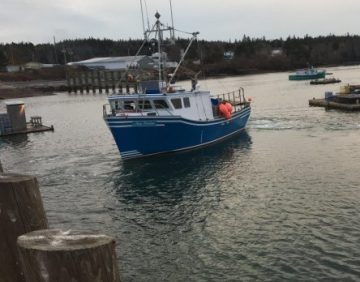 Two days into the fall lobster season and Bay of Fundy fishermen coming ashore at the Dipper Harbour wharf Wednesday night said they are encouraged by what they’re seeing. Fishermen set off early Tuesday morning to set their fall traps in lobster fishing areas 36, 37, and 38. Those areas span from Grand Manan to Alma in a season which will continue until Jan. 14. On the first night of bringing in his catch, Bill Verbeek is happy with what is coming out of the water. “It was very good today, we had a real good day,” he said after unloading. Lobsters in the area were looking firm and full and sizes were also encouraging, he said. “A majority are between 1-2.5 pounds,” said Verbeek, but he said his boat was often pulling three to five pound lobsters also. Read the rest here 07:49
Two days into the fall lobster season and Bay of Fundy fishermen coming ashore at the Dipper Harbour wharf Wednesday night said they are encouraged by what they’re seeing. Fishermen set off early Tuesday morning to set their fall traps in lobster fishing areas 36, 37, and 38. Those areas span from Grand Manan to Alma in a season which will continue until Jan. 14. On the first night of bringing in his catch, Bill Verbeek is happy with what is coming out of the water. “It was very good today, we had a real good day,” he said after unloading. Lobsters in the area were looking firm and full and sizes were also encouraging, he said. “A majority are between 1-2.5 pounds,” said Verbeek, but he said his boat was often pulling three to five pound lobsters also. Read the rest here 07:49
Marine protection for Bay of Fundy pushed by baykeeper
 The New Brunswick Conservation Council’s Fundy baykeeper wants to see Ottawa move ahead with plans to designate much of the Bay of Fundy as a marine protected area. Matthew Abbott attended an open house held by the Department of Fisheries and Oceans in St. George on Wednesday and said there were many “lively discussions” about the future of the bay. Sixteen areas which are considered to be ecologically sensitive have been identified by DFO. “There’s quite a cluster of [habitats] in southwest New Brunswick around Grand Manan, Deer Island, Campobello Island and right in … to Passamaquoddy Bay,” Abbott said. “Marine protected areas can be relatively smaller sites spread around or it could be a larger site that has zones. Some places for fishing — maybe a small area where there isn’t fishing.” Read the rest here 10:54
The New Brunswick Conservation Council’s Fundy baykeeper wants to see Ottawa move ahead with plans to designate much of the Bay of Fundy as a marine protected area. Matthew Abbott attended an open house held by the Department of Fisheries and Oceans in St. George on Wednesday and said there were many “lively discussions” about the future of the bay. Sixteen areas which are considered to be ecologically sensitive have been identified by DFO. “There’s quite a cluster of [habitats] in southwest New Brunswick around Grand Manan, Deer Island, Campobello Island and right in … to Passamaquoddy Bay,” Abbott said. “Marine protected areas can be relatively smaller sites spread around or it could be a larger site that has zones. Some places for fishing — maybe a small area where there isn’t fishing.” Read the rest here 10:54
Bay of Fundy tidal energy battle heads to court Thursday
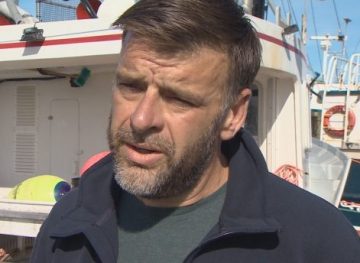 The Nova Scotia government and a company attempting to deploy two tidal turbines in the Bay of Fundy have joined forces to fight a move by a fishermen’s association to block the venture. The Bay of Fundy Inshore Fishermen’s Association is scheduled to appear Thursday in Nova Scotia Supreme Court to ask for a stay on an approval that will allow Cape Sharp Tidal Ventures to install two 16-metre-wide turbines at the bottom of the Minas Passage. Cape Sharp Tidal is a partnership between Halifax-based Emera, parent company of Nova Scotia Power, and French-owned Open Hydro. The province and Cape Sharp Tidal want the court to dismiss the application. Read the story here 09:57
The Nova Scotia government and a company attempting to deploy two tidal turbines in the Bay of Fundy have joined forces to fight a move by a fishermen’s association to block the venture. The Bay of Fundy Inshore Fishermen’s Association is scheduled to appear Thursday in Nova Scotia Supreme Court to ask for a stay on an approval that will allow Cape Sharp Tidal Ventures to install two 16-metre-wide turbines at the bottom of the Minas Passage. Cape Sharp Tidal is a partnership between Halifax-based Emera, parent company of Nova Scotia Power, and French-owned Open Hydro. The province and Cape Sharp Tidal want the court to dismiss the application. Read the story here 09:57
OPINION: Tidal power from Fundy — Separating fact from fiction, Graham Daborn Emeritus Professor at Acadia University
There have been a number of statements in the media over the last few months about the testing of in Minas Passage. Regrettably, inaccurate and exaggerated claims have led to a good deal of public apprehension and confusion. It only takes a few seconds to make an inaccurate or ridiculous statement. Explaining why a statement is untrue or ridiculous, unfortunately, takes rather more time or space. The following addresses a few of these issues. Claim 1: That the turbines to be installed at FORCE will “chop whales into sushi for seabirds to eat.” In response to a question during a CBC interview (on The Current, June 15), a spokesperson for the Bay of Fundy Inshore Fisherman’s Association said: “This is not a suggestion; it is a fact.”,,, The only way to determine that is to install a turbine with monitoring equipment in place to establish the animals’ responses. At present, there is absolutely no evidence that mammals would be at risk of death or injury from the turbines to be tested in Minas Passage, although they may end up having to forage elsewhere. Read the op-ed here, and keep up the fight! 10:55
in Minas Passage. Regrettably, inaccurate and exaggerated claims have led to a good deal of public apprehension and confusion. It only takes a few seconds to make an inaccurate or ridiculous statement. Explaining why a statement is untrue or ridiculous, unfortunately, takes rather more time or space. The following addresses a few of these issues. Claim 1: That the turbines to be installed at FORCE will “chop whales into sushi for seabirds to eat.” In response to a question during a CBC interview (on The Current, June 15), a spokesperson for the Bay of Fundy Inshore Fisherman’s Association said: “This is not a suggestion; it is a fact.”,,, The only way to determine that is to install a turbine with monitoring equipment in place to establish the animals’ responses. At present, there is absolutely no evidence that mammals would be at risk of death or injury from the turbines to be tested in Minas Passage, although they may end up having to forage elsewhere. Read the op-ed here, and keep up the fight! 10:55


































